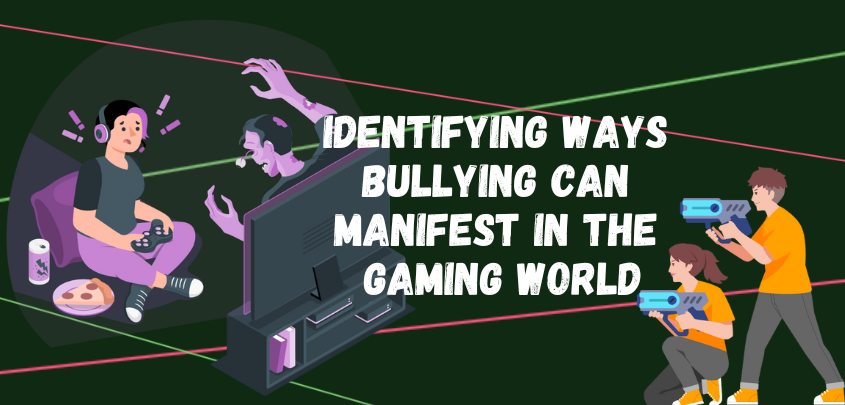
05, Sep, 2024
Cyberbullying – Identifying ways bullying can manifest in the gaming world
Case Story:
Meet Rahul, a 16-year-old gamer who loves playing online multiplayer games. For weeks, he enjoyed battling it out with friends, until one day, a new player joined the group. This player, instead of playing the game, started targeting Rahul with insults, mocking his skills, and eventually rallying other players to exclude him from matches. What began as friendly competition quickly turned into a nightmare. Rahul found himself dreading the game he once loved, questioning his self-worth, and feeling isolated.
Unfortunately, Rahul’s experience is not unique. Cyberbullying in gaming is a growing problem, but it can be managed if you know what to look for and how to respond.
In addition to the common forms of cyberbullying in gaming like verbal abuse, exclusion, and harassment, here are other ways bullying can manifest in the gaming world:
1. Trolling:
- Definition: Trolling involves deliberately provoking or annoying others for amusement. In gaming, trolls may disrupt the game, provoke arguments, or spread chaos in chat rooms.
- Example: A player might repeatedly insult others, throw the game intentionally (known as “throwing” or “griefing”), or give bad advice to sabotage teammates.
2. Account Hacking:
- Definition: Some bullies might take things a step further by hacking into another player’s account, often with the intent to steal in-game assets, ruin progress, or impersonate the victim.
- Example: A bully gains access to your account and deletes your hard-earned achievements, or uses your account to harass others, damaging your reputation.
3. Swatting:
- Definition: This is an extreme form of bullying where a bully falsely reports a serious crime, such as a hostage situation, at the victim’s address, causing law enforcement to respond.
- Example: A gamer might call in a fake emergency, resulting in a SWAT team showing up at the victim’s home. This dangerous and illegal act can have severe consequences.
4. Shaming or Humiliation:
- Definition: Publicly humiliating someone in the game by exposing their mistakes, mocking their performance, or creating memes or videos that ridicule them.
- Example: A bully records your in-game failure and shares it widely on social media or within the gaming community to embarrass you.
5. DDoS Attacks:
- Definition: Distributed Denial of Service (DDoS) attacks overwhelm your internet connection, making it impossible for you to play. This can be done out of spite or as a way to force you out of the game.
- Example: During a competitive match, a bully initiates a DDoS attack on your connection, causing you to disconnect and lose the game.
6. Trash-Talking and Trash-Rumors:
- Definition: Beyond normal competitive banter, trash-talking turns toxic when it becomes relentless, personal, and intended to demean. Trash-rumors are false, damaging stories spread about you.
- Example: A bully might continuously trash-talk you in a way that degrades you personally, or spread rumors that you’re cheating or sabotaging the team.
7. Targeted Harassment or “Stream Sniping”:
- Definition: When a bully watches your live stream to unfairly gain an advantage in the game, such as knowing your location or strategy, and uses that information to continuously target you.
- Example: While streaming your gameplay, a bully uses the live feed to hunt you down in the game, ruining your experience and possibly your stream.
8. Ganging Up:
- Definition: Also known as mobbing, this involves multiple players banding together to bully or gang up on one individual.
- Example: A group of players might repeatedly attack or sabotage you in-game, ensuring you can’t progress, while collectively mocking you in chat.
9. Sextortion:
- Definition: In games with social elements, sextortion involves threats to release embarrassing or explicit information unless demands are met.
- Example: A player threatens to leak private conversations or images if you don’t give them in-game items or money.
10. Discrimination-Based Bullying:
- Definition: Targeting players based on their race, gender, sexual orientation, or other personal characteristics.
- Example: A female gamer might face sexist remarks or be targeted for harassment simply because of her gender.
These varied forms of bullying demonstrate how complex and harmful the gaming environment can become. Recognizing these behaviours is the first step toward protecting yourself and creating a safer gaming space.
